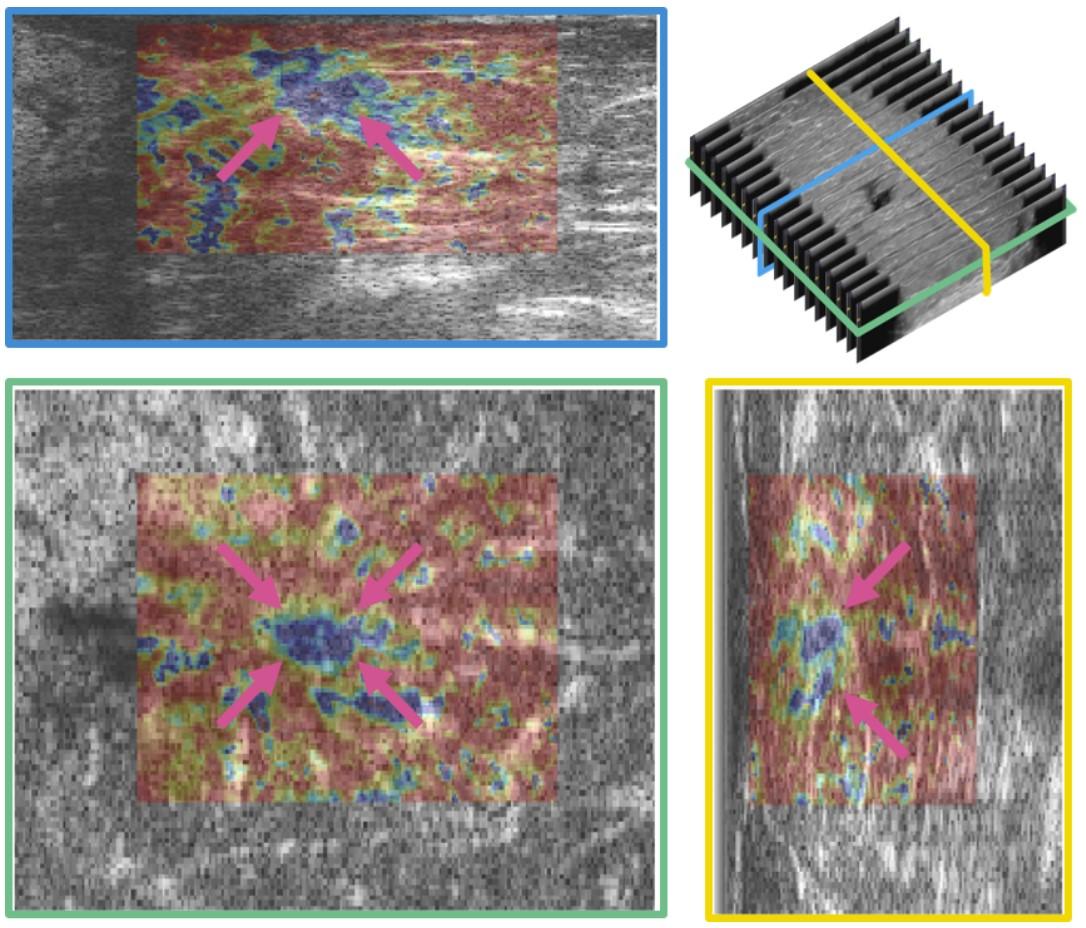Research
BREAST
Background
Breast cancer is a malignant tumour that originates in the cells of the breast. It is one of the most commonly diagnosed types of cancer among women. The lifetime risk of developing breast cancer in industrialized countries is at a level of one in seven women. Early detection and diagnosis are of key importance for effective treatment of breast cancer. However, current diagnostic methods are insufficient to detect all breast cancers in time. This is mainly shown by the condition that we fail to prevent metastatic spread and to adequately monitor treatment. Consequently, new methods are required to improve early cancer detection in a screening setting and after detection to guide and monitor treatment. Ultrasound imaging might be an excellent choice since it has low costs, is real-time en does not use hazardous radiation. However, ultrasound imaging lacks adequate specificity and requires well-educated radiologist to interpret breast ultrasound images. Therefore, our research goal is to improve the detection, diagnosis and monitoring of breast cancer using ultrasound imaging and related methods. Furthermore, we aim to develop low-cost ultrasound and CAD systems to facilitate breast cancer detection for health care workers in developing countries.
Methods
Ultrafast ultrasound imaging
The automated breast volume scanner (ABVS) is capable of recording ultrasound images of the entire breast that can be evaluated afterwards by radiologist to detect suspicious lesions. One of the limitations of this scanner is the long scan times up to 90 seconds to record one volume. Those long scan times introduce breathing artefacts and, consequently, possible lesions can be missed and misclassified. We are developing ultrafast ultrasound imaging techniques (LINK: quantitative) to decrease scan times to a few seconds without compromising and even increasing the image quality (contrast and resolutions).
3D Breast ultrasound elastography
In automated breast volume scanners (ABVS), and ultrasound imaging in general, it is often hard to discriminate between benign lesions and breast cancers. Consequently, the specificity of ultrasound imaging is lacking despite its high sensitivity. Ultrasound elastography, more specific Strain Imaging might be an excellent method to discriminate between lesion types. Breast cancers are often stiff and grown into its surrounding tissue whereas benign lesions are often soft and loosely bonded to surrounding breast tissue. In our research projects, we developed 3D strain imaging for ABVS to obtain strain and shear strain as measure for lesion stiffness and bonding, respectively. This method was validated in simulations, phantoms and in-vivo.
Results
3D Breast ultrasound elastography
We developed 3D breast ultrasound elastography for the ABVS system. This technique was validated in simulations, phantoms and in a patient study. Our results show that stiff breast lesions can be discriminated from surrounding breast tissue (Figure 2) and that breast cancers showed an increased strain ratio compared to benign lesions. In a simulation and phantom study, we showed that lesion bonding (shear-strain) can be measured by 3D ultrasound elastography: benign, loosely bonded lesions) show high shear-strain values around the lesion while breast cancers show low values.
 Strain ratios superimposed on top of B-mode images of an IDC in the coronal (green), transverse (blue) and sagittal plane (yellow). The plane positions are also indicated in the 3D B-mode volume (right-top corner). The IDC is indicated by the purple arrows and was detected medial of the nipple in the right breast in this example. The strain ratios varied between 0 (blue; stiff), 3 (green, intermediate) and 6 (red, soft) (PhD Thesis Hendriks).
Strain ratios superimposed on top of B-mode images of an IDC in the coronal (green), transverse (blue) and sagittal plane (yellow). The plane positions are also indicated in the 3D B-mode volume (right-top corner). The IDC is indicated by the purple arrows and was detected medial of the nipple in the right breast in this example. The strain ratios varied between 0 (blue; stiff), 3 (green, intermediate) and 6 (red, soft) (PhD Thesis Hendriks).
